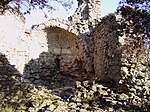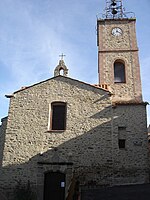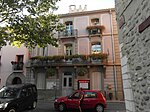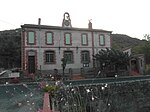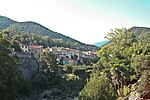The church of Saint-Nazaire de Barbadell (Catalan: Sant Nazari de Barbadell) is a disused Romanesque and pre-Romanesque Catholic church in Bouleternère, in the French department of Pyrénées-Orientales.
Probably built before the year 1000, the church of Saint-Nazari developed with the village of Barbadell from the 11th to the 13th centuries, of which it was the parish church. In the 14th century, for reasons that are unclear (floods, wars, plague or a combination of several of these factors), Barbadell suffered severe depopulation, eventually disappearing completely in the course of the 16th century. The church of Saint-Nazaire, now an isolated chapel, was not forgotten by the people of Bouleternère, who continued to make donations to it in their wills.
In the 18th century, a succession of hermits took up residence at Saint-Nazaire, maintaining the church and keeping it in worship, thus saving it from the abandonment experienced by many rural churches at the time of the French Revolution. However, this abandonment was only delayed: in the course of the 19th century, the old church changed ownership several times, and was then divided between several properties. It was transformed into a building for agricultural use, and then into a dwelling, which seriously deteriorated it.
The old church has been completely renovated since 1997, when the three owners founded a conservation association to which they bequeathed the building.
In the 21st century, the church regained its medieval appearance. It comprises a rectangular nave oriented west-east, extended by a flat apse whose axis is slightly offset to the south. The walls of the nave are reinforced with double arches and formets supporting a barrel vault. The building is topped by a bell-wall and covered with a slate roof. Traces of 18th-century painted decoration remain on the interior walls.
The church of Saint-Nazaire is surrounded by low walls and ancient canals, showing that the inhabitants of Barbadell have had to battle floods and high water from the river Boulès, on the banks of which this building is built, many times over the centuries.

